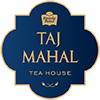Taj Mahal Oolong Tale -Dance of the Dragon
- June 09 2020
- 1 Comment
In India we often talk about the omnipresent and omnipotent “Kadak Chai” and can be blissfully content that wherever we go - North, South, East or West, we are sure to get it at any local Tea shop. In contrast, only a few well-heeled consumers, especially in Kolkata mention that they drink “Lumbi Patti” Darjeeling chai. More recently, the aspiring weight watchers have taken to Green Tea. Consumers in India are by and large unaware of other types of teas.
At Taj Mahal Tea House, Mumbai, we are proud to talk to you about another variety of Specialty Tea- The DARJEELING Misty Oolong Tea available on the E Commerce portal and Tea House Café.
Oolong Tea originated in Fujian region of China. Records indicate that it was developed in the 16th Century AD. Oolong is actually derived from the Chinese word “Wu Long” that means Black Dragon. There are many legends about the creation of this tea.
One legend was that a serpentine black plant was wrapping itself around some tea bushes in Fujian, China. Since the plant resembled a body of a Dragon, the locals called the tea plant Wu Long.
Another legend is that there was a Dark-Skinned Chinese warrior named ‘Dragon” who was carrying green tea on a hunt. During his rest, when he decided to brew the tea, he found that the leaves became oxidized during storage by turning brownish. The liquor had a slightly sweetened or fragrant taste. This partially OXIDIZED Tea came to be known as Wu long, after this famous warrior.
A recent and more plausible explanation is that when hot water is poured over Oolong Tea, the leaves get agitated and “dance like a black dragon” in the tea pot.
From China, Oolong tea found a good market in Formosa (Taiwan) and so today, this tea is produced mostly in China & Taiwan.
So, if we talk of Green and White Teas as “Unoxidized or unfermented” and Black Teas as “Fully oxidized or fully fermented”, OOLONG Teas are “Partially Oxidised or Partially Fermented”. They are sometimes known as a “Halfway house” between Green and Black Teas. This implies that Oolong teas have some characteristics of both Green and Black Teas. However, because of the varying degrees that the tea can be oxidised, you can have numerous categories of Oolong Tea available!

In the 1900s, the production of Oolong was started in Darjeeling and today, only a few gardens of the total 87 gardens have the capability to make it.
Darjeeling Oolong is prepared at only high elevation gardens where the delicate flavours can be retained. During March /April (First Flush), only the top 2 leaves and a bud are plucked from the bushes and these leaves are mostly sun dried to reduce moisture. They are then “artistically rolled” to slightly bruise the leaves enabling “oxidation” to commence. After a brief period, the leaves are dried or fired to arrest any further oxidation.
The resultant dry tea leaf has a greenish brown appearance and has a long, artistically twisted shape.
The liquor is light golden yellow in colour and bright. Unlike the green tea, the Oolong tea has a floral, fruity and buttery taste. The harshness of Green tea is absent because of the mild oxidation the leaves have undergone. Some connoisseurs claim that the tea tastes like dessert wine!
For the caffeine conscious, as oolong tea is a halfway house between Green and black, the caffeine level of Oolong is lower than black but higher than Green.
Why not conduct a unique “Misty Oolong Tea Ceremony” exclusively for yourself to bring you into that tranquil and serene space.

Simply put the Taj Misty oolong tea in a transparent teapot and pour hot (not boiling) water on the leaves. The leaves will get “agitated” and start to “dance like a black dragon”. Focus your attention on the twirling of the leaves and observe how they eventually swell up and seductively take possession of the entire brewing space. Observe the incremental changes in water colour from transparent to golden yellow. Inhale the fresh aroma of the infused leaves. What are the flavours you can experience? Ideally, pour this tea into a glass cup and while taking your sip, mindfully revel in the floral and complex flavours this unique tea offers.
To heighten your experience, put on some light classical Spring Ragas (like Raga Hindol) and savour this Misty oolong Tea with light Oriental food, baked vegetables, salads, less spicy fish and chicken.
We hope you find this experience blissful, tranquil and get “Oolong” with this tea…. Famously!






Comments
I completely agree, It is great. And I am always surprised when I read posts about the food. This great content. I have learned something powerful today.mustard seeds exporter manufacturer